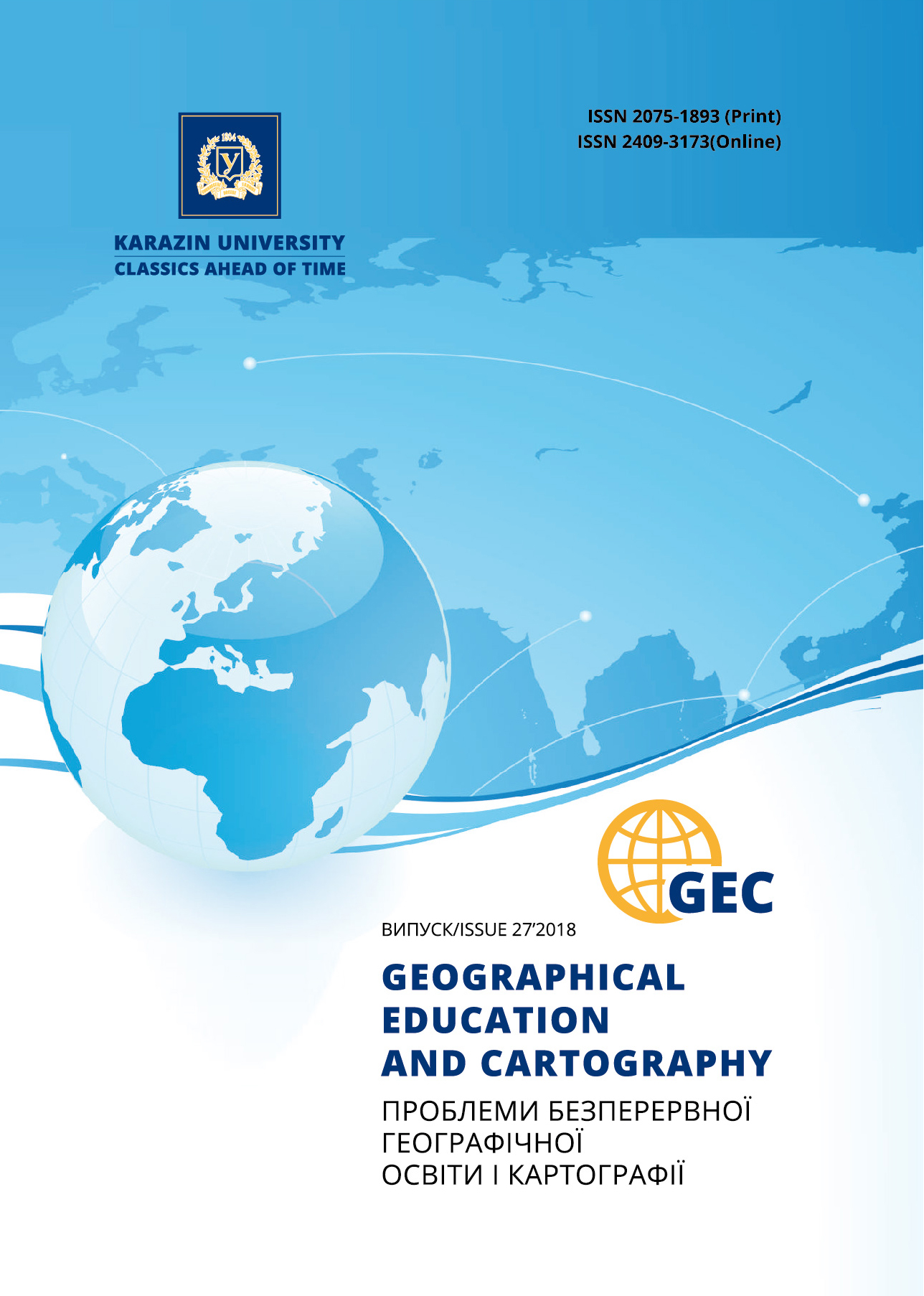Analysis of the development and functional zoning of the Russian Arctic cities, identified by satellite imagery
Abstract
The paper deals with the study of the features of the developed areas and functional zoning of the largest Russian Arctic cities: Apatity, Vorkuta, Murmansk and Norilsk. The main data were images from SPOT-5 satellite (optical spectral range), Landsat 8 satellite (thermal spectral range) and masterplans of the studied cities, which were used for distinguishing the types of development. Images from the SPOT-5 satellite were used to reveal the urban development with its subsequent classification according to the type of use, and the functional zonation was corrected using the combination and generalization of the classes. Consideration of the thermal structure of urban areas in the analysis of their development and functional zoning allows us to identify features of urban space that are not visible in the optical range, important for assessing the city opportuneness for its inhabitants. It is revealed that the considered cities have many common characteristics. Thus, the area of industrial zones of all the cities beyond the Arctic Circle makes up a significant proportion - almost 50% of the territories. All industrial zones gravitate toward the city-forming enterprises, which is especially evident in the example of Norilsk. For most cities, a low proportion of natural and anthropogenic territories is common. In Apatity and Murmansk, this value is much higher than in the more eastern cities of the Polar region, because creation of parks in Vorkuta and Norilsk is difficult due to natural and climatic conditions. In the northern cities abandoned areas are spread, both former residential and industrial, which are especially numerous in Vorkuta. In the studied cities, a mid-rise and multi-storey type of development prevails, and there is practically no private sector with a private household, which is explained by the specific climatic conditions of the region.
Downloads
References
Baldina, E.A., Grishhenko, M.Yu. (2015). Metodika deshifrirovanija raznovremennyh kosmicheskih snimkov v teplovom infrakrasnom diapazone [The method of thermal infrared multitemporal satellite images interpretation]. MSU Bulletin. Series: Geography, 3, 35–42.
Belenko, V.V. (2017). Vyjavlenie struktury i izmenenij zastrojki po kosmicheskim snimkam dlja celej kartografirovanija v ramkah gradostroitel’stva [Identification of the structure and changes of the urban development using satellite images for urban planning mapping]. Natural and technical sciences, 8, 50–55.
Grishhenko, M.Ju. (2015). Metodika deshifrirovanija teplovyh kosmicheskih snimkov dlja kartografirovanija prirodnyh i antropogennyh territorij: Avtoref. dis. … kand. geogr. nauk: 25.00.33 [Method of thermal infrared satellite images interpretation for mapping natural and anthropogenic territories: Thesis abstract of candidate … geographical sciences]. Moskva: MGU, 24.
Grishhenko, M.Yu., Ermilova, Yu.V. (2018). Kartografirovanie zastrojki krupnejshih gorodov rossijskogo Zapoljar’ja po kosmicheskim snimkam raznyh spektral’nyh diapazonov [Mapping of the built-up areas of Russian Arctic biggest cities using satellite imagery of various spatial resolution]. Geodesy and cartography, 79 (3) 23-34.
Kravcova, V.I., Erlich, V.A. (2013). Kartografirovanie struktury zastrojki territorij, prisoedinjaemyh k Moskve [Mapping of the development structure of territories annexed to Moscow]. Geodesy and cartography, 6, 23–32.
Evdokimov, Yu.A., Backih, Yu.M. (2002). Severnyj morskoj put’: problemy, vozmozhnosti, perspektivy vozrozhdenija [Northern Sea Route: problems, opportunities, prospects for revival]. Economic science in modern Russia, 2, 101-112.
Marchukov, V.S., Chemal, D.A. (2013). Avtomatizirovannoe vyjavlenie izmenenij na zastroennyh territorijah Severnogo Iraka po mnogozonal’nym kosmicheskim snimkam [Automated detection of changes in the Northern Iraq built-up areas using multispectral satellite images]. News of universities. Geodesy and aerial photography, 5, 74–77.
Pavlenko, V.I. (2013). Arkticheskaja zona Rossijskoj Federacii v sisteme obespechenija nacional’nyh interesov strany [Arctic territories of Russian Federation in the supporting system of national interests]. The Arctic: ecology and economy, 4, 16–25.
Sevast’janov, D.V., Isachenko T.E. (2014). Geojekologicheskie osobennosti i sovremennoe rekreacionnoe osvoenie Noril’skogo regiona RF [Geoecological features and modern recreational development of the Norilsk region of the Russian Federation]. Tsarskoye Selo readings, XVIII, 250-253.
Hajbrahmanov, T.S. (2014). Kartograficheskaja baza dannyh dlja obespechenija jekologo-geohimicheskih issledovanij gorodskoj territorii: Avtoref. dis. ... kand. geogr. nauk: 25.00.33 [Cartographic database for supporting environmental-geochemical surveys of urban territory: Thesis abstract of candidate … geographical sciences]. Moskva: MGU, 24.
Chufarova, N.E. (2012). Fraktal’nyj analiz rajonov gorodskoj zastrojki na snimkah v teplovom IK-diapazone [Fractal analysis of urban areas in the thermal IR range]. News of universities. Geodesy and aerial photography, 1, 62–67.
Matthias, B., Martin, H. (2003). Mapping imperviousness using NDVI and linear spectral unmixing of ASTER data in the Cologne-Bonn region (Germany). Proceedings of the SPIE 10th International Symposium on Remote Sensing, 8–12 September 2003, Barcelona, Spain, 1–11.
Esau, I., Miles, V. (2016). Warmer urban climates for development of green spaces in northern Siberian cities. Geography. Environment. Sustainability, 04 (09), 48–62.
Kemmouche, A., Khedam, R., Mering, C. (2010). Mapping of built-up area density from satellite images using morphological granulometries. ISPRS TC VII Symposium – 100 Years ISPRS, Vienna, Austria, July 5–7, 2010. IAPRS, XXXVIII, 7A, 94–99.





